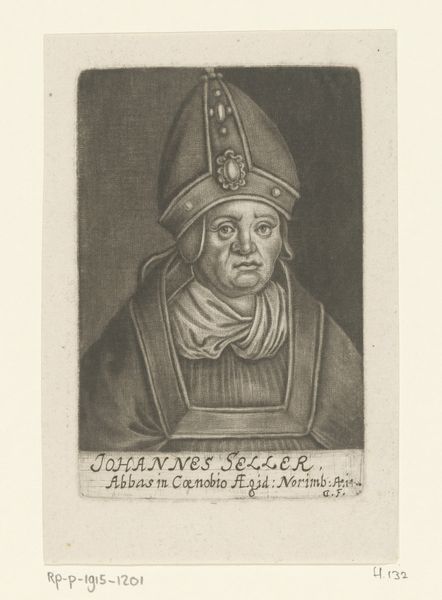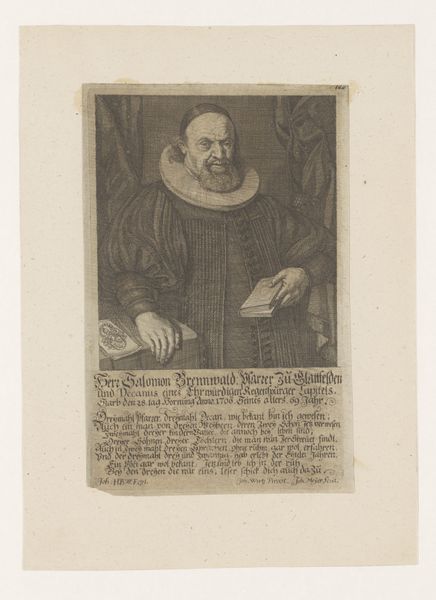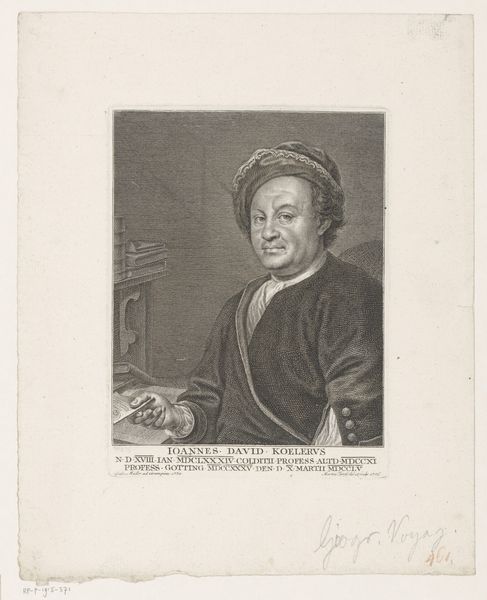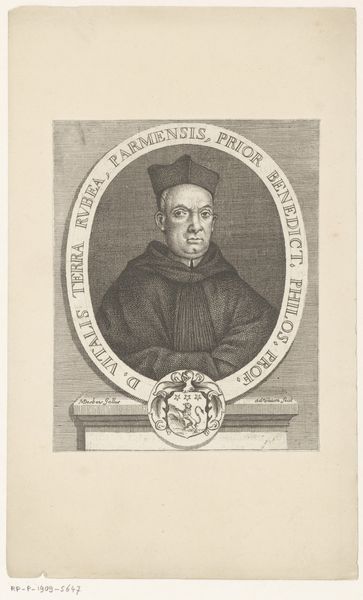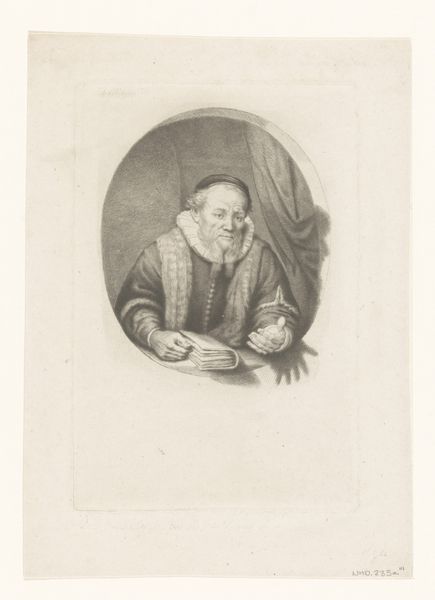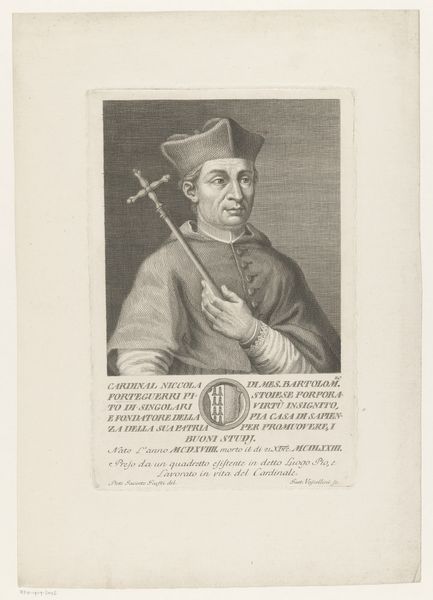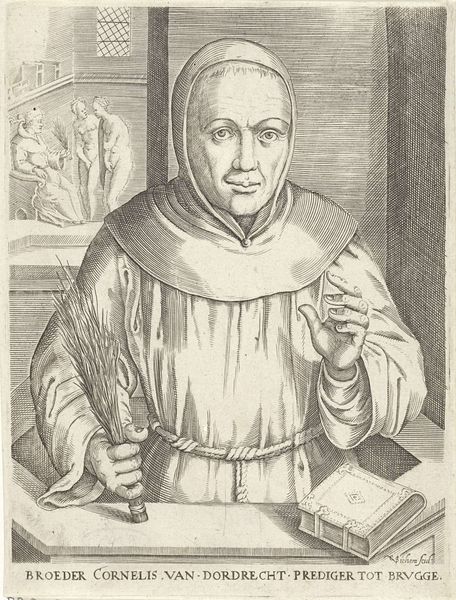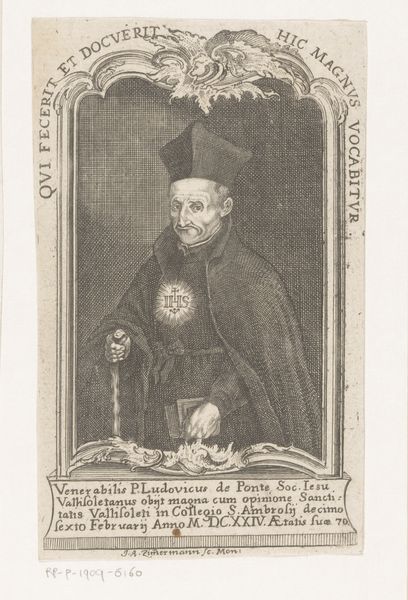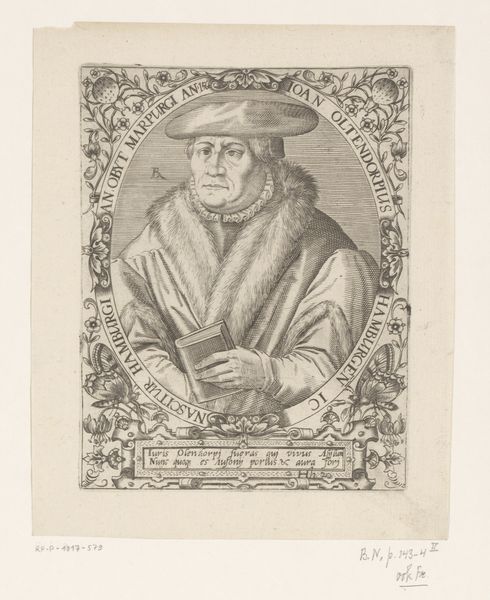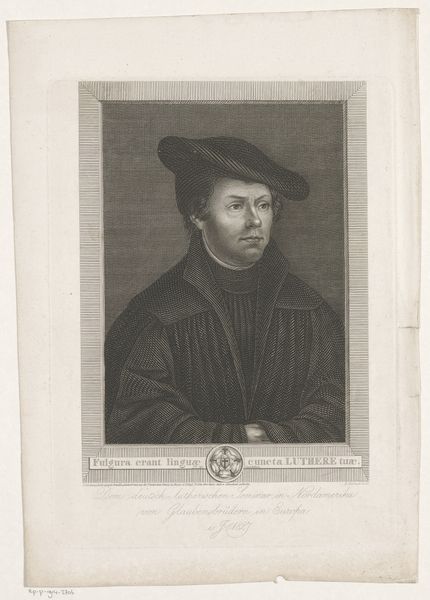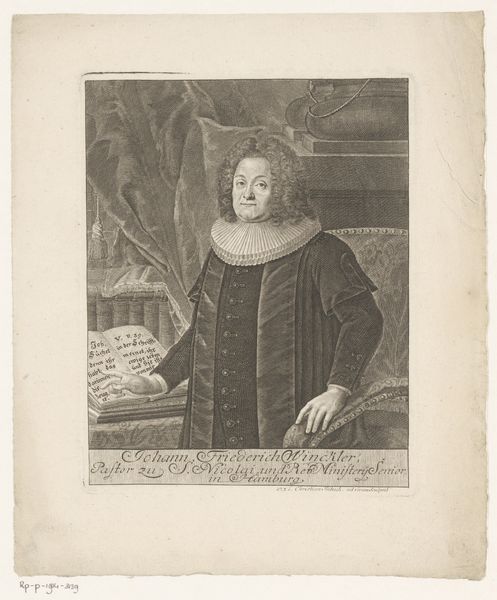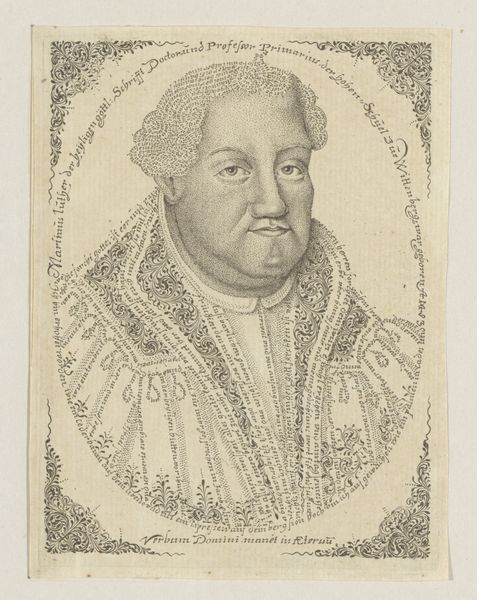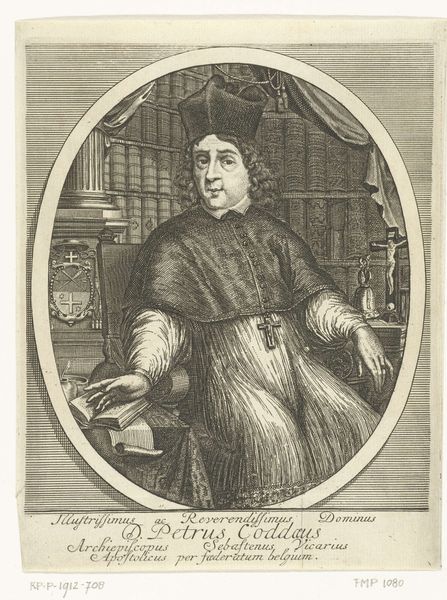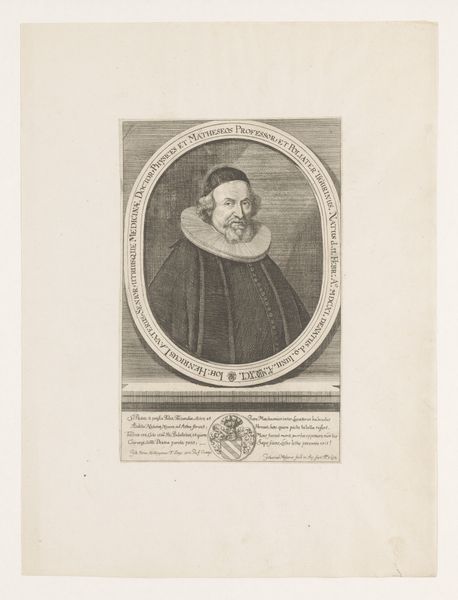
drawing, pen
#
portrait
#
drawing
#
baroque
#
book
#
caricature
#
pencil drawing
#
pen
#
portrait drawing
#
academic-art
Dimensions: height 166 mm, width 127 mm
Copyright: Rijks Museum: Open Domain
Editor: This is "Portrait of Kunigunda Schmidt," created around 1670 by Georg Fennitzer, rendered in pen and pencil. The subject’s expression and the sharp lines give it such a severe feeling. What strikes you first when you look at it? Curator: The severity emerges primarily from the interplay of light and shadow, wouldn't you say? Consider how Fennitzer uses stark contrasts to define the planes of the face, creating a sense of volume and gravitas. It's the geometrical exactitude that adds such seriousness. Notice how the dress mirrors this pattern through the collar that frames her face? Editor: I do see that mirroring, a kind of geometric framing. But I still can't get past that large hat. Does that affect the structure, or is it just detail? Curator: The hat is not a mere accessory. Its circular form functions as a counterpoint to the linear elements of the composition—the sharp lines of her face, her collar, the book on the table. The shape of the hat, repeated in the composition in other locations, becomes the central, unifying feature that contrasts with linear rigidity. Editor: That's interesting, because it almost flattens the image at the same time. It both connects it and makes it seem less realistic. Curator: Precisely. The hat challenges the illusion of depth that is simultaneously attempted, creating tension between flatness and volume—a duality that is essential in evaluating any portrait. Editor: That tension makes this a really compelling piece. Thank you for pointing out how these elements interact and shape the overall feeling. Curator: My pleasure. It's in deciphering those structural relationships that we discover how images obtain meaning.
Comments
No comments
Be the first to comment and join the conversation on the ultimate creative platform.
